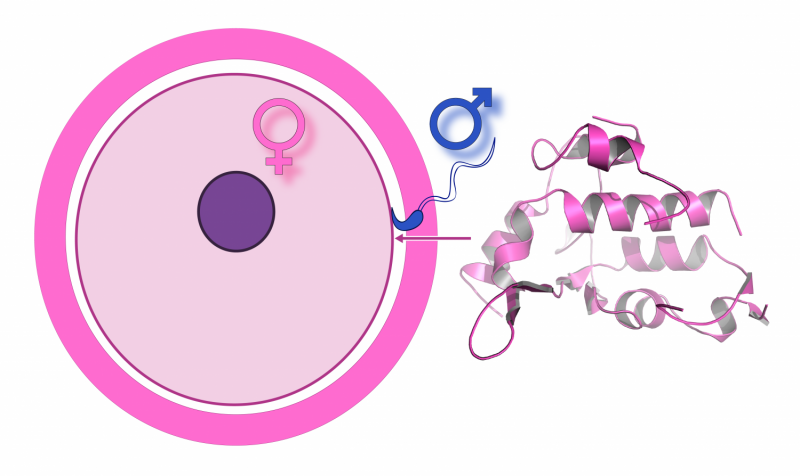A step closer to understanding fertilization

Researchers at Karolinska Institutet in Sweden have taken a step closer to understanding the mechanism that leads to the fusion of egg and sperm at fertilisation. Using the technique X-ray crystallography, they have determined the 3D structure of Juno, a mammalian egg protein essential for triggering gamete fusion. Their findings are not only interesting from an evolutionary perspective, but also reveal the shape of a possible target for future non-hormonal contraceptives.
The fusion of egg and sperm is an essential step of fertilisation in sexually reproducing organisms and the molecular mechanism behind this event has long been the object of intense research. A breakthrough came in 2014 with the discovery of Juno, a protein receptor found on the egg. Juno, which is tethered to the cell membrane of the egg, binds to sperm surface protein Izumo1 when egg and sperm meet.
The discovery of Juno and Izumo1 opened up new possibilities to study the process of fertilisation at the molecular level. The importance of both molecules was demonstrated when experiments showed that mice lacking either of them are infertile. However, how Juno interacts with Izumo1 was unclear, something that Luca Jovine, Professor of Structural Biology at the Department of Biosciences and Nutrition and the Center for Innovative Medicine, has worked hard to understand.
Juno belongs to a family of proteins called folate (or vitamin B9) receptors. Such receptors are vital to a number of biological processes, including foetal development. In the present study, which is published in the scientific journal Current Biology, the researchers present a high-resolution 3D structure of Juno. This reveals that Juno is similar in shape to the other members of its family, with the exception of the specific region that - in these other proteins - serves as the binding site for vitamin B9. This observation explains why Juno is unable to bind to the vitamin.
The structure also suggests that the same region of Juno instead acts as the binding site for sperm protein Izumo1. Professor Jovine's group and their collaborators from Cambridge analysed how changes in this part of Juno affect its ability to pair with Izumo1, and produced results indicating that Izumo1 binding involves two specific loops of Juno.
"Remarkably, we found that changing these loops either caused Juno to completely lose its ability to bind Izumo1 or altered the species-specificity of the binding," says Professor Jovine. "Our data thus not only shows how Juno looks like at the atomic level, but also brings us a step closer to understanding how its interaction with Izumo1 mediates the docking between the membranes of gametes".
According to the researchers, the results suggest that modifications of an ancestral vitamin B9 receptor occurred far back in time, which gave rise to a key interaction essential for mammalian reproduction: the attachment of egg and sperm membranes leading to the fusion of gametes.
More information: 'Divergent evolution of vitamin B9 binding underlies Juno-mediated adhesion of mammalian gametes', Ling Han, Kaoru Nishimura, Hamed Sadat Al Hosseini, Enrica Bianchi, Gavin J. Wright, and Luca Jovine, Current Biology online 8 February 2016.
Journal information: Current Biology
Provided by Karolinska Institutet




















